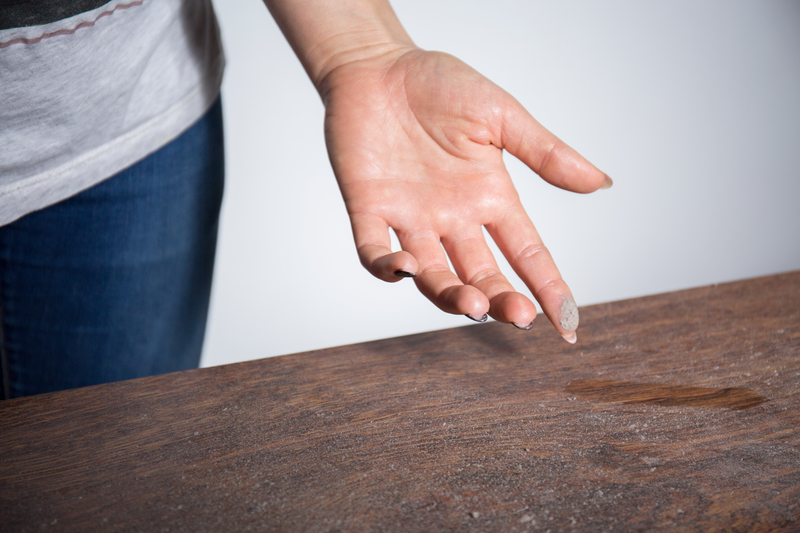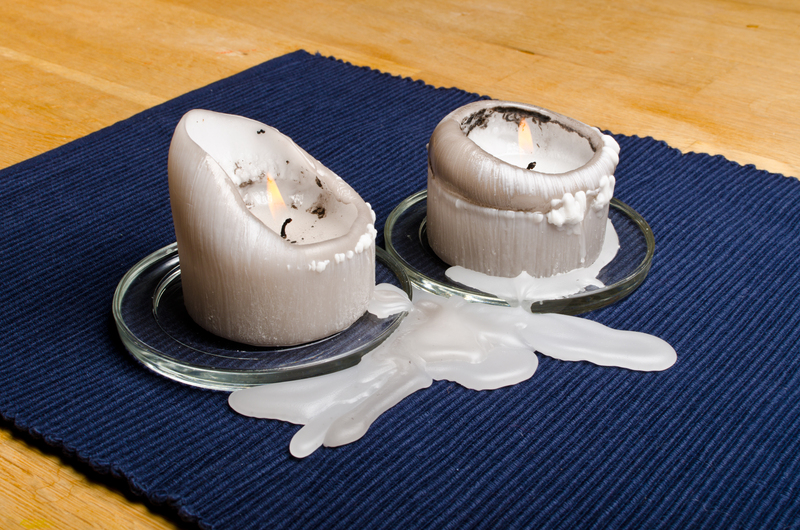Unveil the Tricks: Safeguard Sofa Covers from Wash Damage
Posted on 17/06/2025
Unveil the Tricks: Safeguard Sofa Covers from Wash Damage
Sofa covers are the unsung heroes of home decor--protecting your furniture from spills, stains, pet hair, and daily wear-and-tear. However, maintaining their beauty and integrity after frequent washing can be a challenge. Many homeowners face the disappointment of faded colors, stretched fabric, or damage to their beloved sofa protectors. Today, we'll unveil effective tricks to safeguard sofa covers from wash damage, ensuring their longevity and keeping your living space looking stunning!

Why Do Sofa Covers Get Damaged in the Wash?
Understanding the root causes behind wash damage will empower you to adopt proven measures that keep your sofa covers in pristine condition.
The Common Culprits:
- Incorrect Washing Methods: Harsh cycles, excessive heat, or unsuitable detergents can cause irreversible harm.
- Fabric Sensitivity: Delicate materials such as cotton blends, velvet, or linen are particularly vulnerable.
- Overcrowding the Machine: Stuffing too many items can lead to uneven washing and excess friction.
- Neglecting Zippers and Fastenings: Leaving zippers open or ignoring Velcro fastenings causes snagging and tears.
Pre-Wash Precautions for Sofa Cover Longevity
Before you even toss your cushion covers in the washing machine, take *preventive steps* to minimize the risk of wash damage. Consider these essential pre-wash tricks:
1. Read the Care Label Carefully
The most important trick in protecting sofa covers is to check the manufacturer's cleaning instructions. These labels are tailored for the specific fabric, indicating:
- Preferred water temperature (cold, warm, or hot)
- Suitable wash cycle intensity
- Whether hand washing is recommended
- If machine drying or air drying is best
SEO Tip: Including "how to protect sofa covers in the wash" can boost content relevancy for your readers.
2. Vacuum or Brush Off Debris
Before removal, *vacuum off* dust, dirt, or pet dander using a soft brush attachment. This prevents abrasive debris from lodging in the fabric weaves during washing, which can cause wear or fading.
3. Secure All Fastenings and Turn Inside-Out
For zippered sofa covers or those with Velcro, ensure all closures are securely fastened! This simple step minimizes tangling and snagging. For extra protection, turn covers inside-out before washing--they will be less exposed to direct friction, preserving color and texture.
4. Spot Clean First
If only specific areas are stained, try spot-cleaning before subjecting the entire sofa cover to a full wash. Use a gentle upholstery cleaner or a solution of mild soap and water, then blot gently with a clean cloth.
Best Wash Practices to Protect Sofa Covers
After pre-wash preparation, follow these expert-approved washing methods to minimize wash-related damage.
1. Use Gentle, Fabric-Friendly Detergents
Invest in a mild, color-safe laundry detergent. Avoid bleach and harsh chemicals, as these agents can weaken fibers and cause colors to fade. If you prefer eco-friendly solutions, look for plant-based detergents which are less likely to leave residue or irritate sensitive skin.
2. Wash on Cold or Lukewarm Settings
Excess heat is the enemy of fabric durability. Always use cold or lukewarm water when cleaning sofa covers. High temperatures can shrink, distort, or fade the cover material--especially on natural fibers like cotton or linen.
3. Choose the Delicate or Hand-Wash Cycle
Select the most gentle machine setting available, such as "delicate" or "hand wash." These cycles offer slower agitation and shorter wash times, which significantly reduce the risk of tearing, stretching, or pilling the fabric.
4. Don't Overload the Washing Machine
Washing too many items at once increases friction and can warp the shape of your sofa covers. Wash each cover separately or with like fabrics to ensure thorough, gentle cleaning and rinse-out.
5. Add an Extra Rinse Cycle
If detergent residue is left in the fabric, it may make the covers feel stiff or irritate sensitive skin. Adding an extra rinse ensures complete detergent removal and maintains softness.
6. Avoid Fabric Softeners
Though it seems counterintuitive, fabric softeners can actually degrade certain fibers over time. Most modern sofa covers are pre-treated for softness, so regular use of softener is unnecessary and may reduce absorbency.
Advanced Tricks for Extra Protection of Your Sofa Covers
1. Wash Covers in a Mesh Laundry Bag
Place each sofa cover inside a large mesh laundry bag before washing. This extra layer provides a physical barrier, minimizing the risk of friction, snags from zippers, or tears from contact with other laundry items.
2. Use Vinegar To Maintain Color Brightness
A half-cup of white vinegar added during the rinse cycle can set colors and prevent fading--especially helpful for richly colored or patterned sofa covers. Vinegar also naturally freshens and deodorizes fabrics!
3. Air Dry for Best Shape Retention
Never tumble-dry sofa covers unless the care label approves it! Heat from dryers can shrink and deform covers, leaving them ill-fitting. Instead, hang sofa covers over a clothesline or lay flat on a clean, dry towel, reshaping them as they dry to avoid wrinkling or misshapen areas.
4. Avoid Direct Sunlight When Drying
While air-drying is superior, intense sunlight can cause colors to fade. Dry in a shaded or indoor area whenever possible.
5. Iron on Low, If Necessary
If your covers emerge wrinkled, iron on the lowest appropriate heat setting with a protective cloth overlay--never directly on the fabric! This will smooth out lines without burning or shining delicate materials.
Proper Storage: Preserving Sofa Covers Between Washes
Your journey to safeguarding sofa covers from damage isn't complete without proper storage habits:
- Store clean covers in a dry, cool area to reduce humidity or mold buildup.
- Use breathable storage bags rather than plastic to avoid mildew and odor accumulation.
- Add a cedar block or lavender sachet for natural moth repellence and freshness.
Fabric-Specific Tips: How to Wash and Protect Different Types of Sofa Covers
Different sofa cover fabrics require tailored care to maximize longevity. Let's examine the most common:
1. Cotton and Cotton Blends
- Gentle cycle, cold water wash.
- Avoid heavy detergents and enzymatic cleaners for colored fabrics.
- Reshape immediately after washing and air dry for wrinkle prevention.
2. Linen Sofa Covers
- Hand-wash or machine wash cold on delicate cycle.
- Lay flat to dry to maintain form, as linen can shrink easily.
- Iron on damp fabric if needed.
3. Velvet Sofa Covers
- Always check the label; most must be dry cleaned.
- If machine washable, use cold water and wrap in a mesh bag.
- Never wring out velvet; gently press excess water and hang dry away from sunlight.
4. Synthetic Fabrics (Polyester, Microfiber)
- Wash with cold or warm water on normal or delicate cycle.
- Synthetic covers are less prone to shrinking but should still be air dried for longevity.
When to Replace Versus Repair Damaged Sofa Covers
Even with the best care, sofa covers may eventually show wear. Evaluate whether to repair minor issues or invest in new covers:
- Minor tears or holes: Repair with a fabric patch kit or take to a tailor.
- Persistent stains or color loss: Consider professional cleaning before replacing.
- Significant shape loss or fabric thinning: This is a sign it's time for new covers to maintain the aesthetic and protective value of your sofa.
Prolonging Sofa Cover Life: Habits to Adopt
Aside from careful washing, these daily habits help you safeguard your sofa cover investment:
- Rotate and flip seat cushions regularly to even out wear.
- Vacuum or brush covers weekly to keep dirt off.
- Address spills immediately to prevent them from setting in.
- Keep pets' claws trimmed to avoid snags or tears.

Frequently Asked Questions About Safeguarding Sofa Covers from Washing Damage
How often should I wash sofa covers?
Wash covers every 3-6 months, or more often if you have pets, allergies, or high usage. Spot clean between washes for best longevity.
Is dry cleaning a better alternative for sofa covers?
For delicate or specialty fabrics like velvet, dry cleaning is sometimes necessary. Always adhere to the care instructions for your sofa cover to prevent any wash damage.
What temperature is best for washing sofa covers?
Cold water is safest for most fabrics and helps protect colors and fibers. Lukewarm can be used for robust, heavily soiled covers if the label permits.
Can I use bleach if my covers are white?
Bleach is generally too harsh for most fabrics and can lead to yellowing or fiber breakdown--even on whites. Instead, use oxygen-based bleach alternatives for stain removal.
Conclusion: Your Sofa Covers Deserve Protection!
Safeguarding sofa covers from wash damage doesn't have to be daunting. With a combination of mindful pre-wash preparation, gentle cleaning practices, and diligent post-wash care, your covers will continue to adorn and protect your sofa brilliantly for years. Follow these tricks and tips, and you'll unveil the full potential of long-lasting, beautiful sofa covers--even after repeated washes.
By prioritizing proper care, you're not only protecting your sofa covers from wash damage, but also investing in the overall longevity and style of your living space. For the latest tips and home care hacks, bookmark this page and transform the way you treat your furniture forever!


